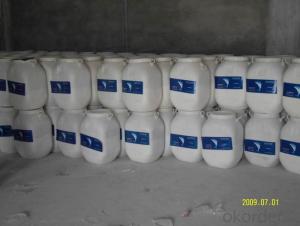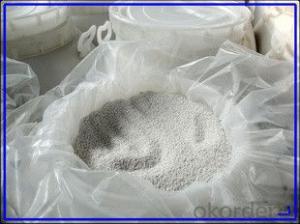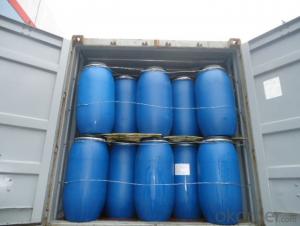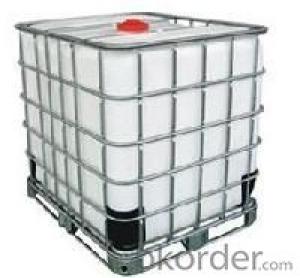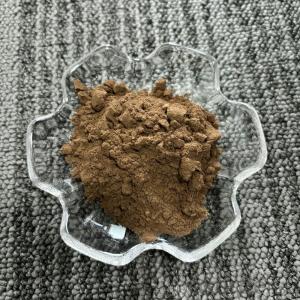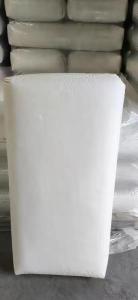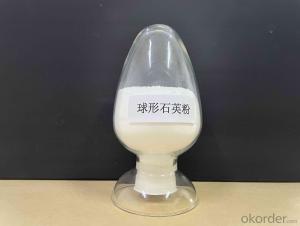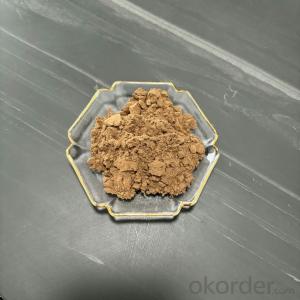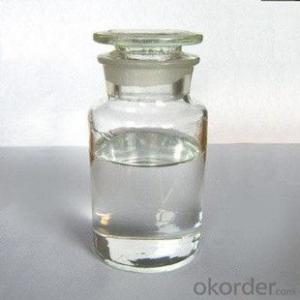Sodium Hypochlorite Hot Selling National Standard
- Loading Port:
- Tianjin
- Payment Terms:
- TT OR LC
- Min Order Qty:
- 25 m.t.
- Supply Capability:
- 6000 m.t./month
OKorder Service Pledge
OKorder Financial Service
You Might Also Like
Sodium Hypochlorite
CAS NO: 7681-52-9
Chemical Formula: NaClO
Molecular Weight: 74.44
Appearance: Yellow transparent Liquid
Standard: HG/T2498-1993
Specification:
Available Chlorine: 8%-16%
NaOH: 1% Max
Transportation Info:
Class: 8 UN NO: 1791 PG:III
Application:
Disinfection for swimming pool, drinking water, cooling tower and sewage and waste water, food, and farming, hospital, school, station and household etc
Good bleaching and oxidation in paper and dye industry.

Normal Packing: 30kg drum, 1200kg IBC Tank
Properties:
Yellowish solution, like the smell of chlorine.
Application:
Used in the water the purification, as well as made the disinfectant, the paper pulp to float waits in vain, in the pharmaceutical industry used the system chloramine and so on.
Packing:
25kg Plastic drum, 22mts /1X20FCL
Validity | |
Product Grade | Analytical Purity >7.5% |
Pharmacopoeia | Q/(HG)SJ 663-95 |
Capacity | 50000Kg |
Supply Position | Normal Production |
Package | 25Kg/Plastic drum |
Solid Sodium Hypochlorit
1) Solid Sodium Hypochlorit is white or light yellow green, crystalline, alkaline, lightly absorptve humidity and easily solvable in water and alcohol.
2) Solid Sodium Hypochlorit is an oxidizng agent with high efficiency and an excellent bleaching ingredent, its afficiency is aqual to 10 times of bleaching powder.
3) Solid Sodium Hypochlorit is stable when stored under room tenperature or normal condition, its stability is bigger than sodiun hypochlorite and smaller than sodium chlorate.
4) When mixed solid sodium chlorite and alkaline solution are heated over 70 centigrade, it resoves chlorine hydrogen.
5) Solid Sodium Hypochlorit is easily explosive, buring or poisinous when met, , bumped or rubbed with wooden bits, organic substance and reeductive substance.
- Q:How are a catalyst and an intermediate similar? How are they different?
- A catalyst speeds up the rate of a reaction by lowering the activation energy barrier which is, presumably, the energy required to achieve the reaction intermediate. Catalysts are also not consumed in the reaction, they are regenerated towards the end. A reaction intermediate is a configuration that a molecule takes prior to achieving it's lowest energy form which would signify the end of the reaction. Intermediate usually are hard to isolate because of the incentive to go to the most stable configuration. How are they different? A catalyst is not a part of the reaction product and it doesn't get consumed. An intermediate in a reaction is transformed into the product. How are they similar? Well, catalysts drive the reaction and make it easier for the reaction for follow through. Since intermediates are high energy and thermodynamics tells us that low energy is favorable, the incentive for a high energy intermediate to drive down to it's stable for can also drive a reaction. I hope that helps. I hope it makes sense.
- Q:Chemistry: Does the catalyst participate in the reaction?
- Therefore, the relationship between the catalyst and the chemical reaction is probably as follows: 1. The catalyst itself does not react chemically with any of the chemical reactions, but only with its own characteristics to change the rate of chemical reactions; 2. Catalysts involved in chemical reactions , But before and after the reaction of its chemical properties, physical properties and quality characteristics such as no change
- Q:Is the reaction of the exhaust purification of cars (carbon monoxide and nitrogen
- NO + 2CO = 2CO2 + N2 reaction is exothermic. Conditional catalyst
- Q:Why the catalyst is required to have a large surface area and a rich pore structure
- In order to speed up the absorption, speed up the reaction rate
- Q:In the chemical reaction, why can the catalyst speed up the reaction rate
- Manganese dioxide, copper sulfate, catalytic hydrogen peroxide decomposition.
- Q:Can chemical reaction limits be changed by catalyst or other methods?
- According to the principle of chemical equilibrium, the role of the catalyst is to speed up the reaction rate at the same time, but to accelerate (decrease) the multiple is the same, so the catalyst can not change the equilibrium state. Will only change the time to reach the equilibrium state.
- Q:Which branch of chemistry or what specialty can study the catalyst
- Inorganic Chemistry: Preparation, Synthesis, Structure and Catalytic Reaction of Inorganic Catalysts and Catalyst Carriers
- Q:Does the catalyst slow down the chemical reaction rate? Still can only accelerate
- As far as I know, depending on the definition of the catalyst to reduce the activation energy can only accelerate the reaction rate. However, some substances can reduce the rate of reaction, for example, to dilute the reaction solution to slow down the reaction rate, but slow down the general mention of the catalyst.
- Q:Why extract the genome, the digestion is always not cut
- The process of metabolism in the body contains many complex and regular material metabolism and energy changes.Green plants and certain bacteria use solar energy, water, CO2 and inorganic salts and other simple substances, after a series of changes, the synthesis of complex sugar, Fat, protein and other macromolecules, and animals and the use of these plants in the material, and through the complex decomposition and synthesis, the reaction into their own part of the need to grow, breeding, etc. In the laboratory, complex The synthesis and decomposition of organic matter must be carried out under severe conditions such as high temperature, high pressure, strong acid and alkali, such as starch and protein hydrolysis, and some reactions are difficult to carry out in vitro, such as protein synthesis, but in biological conditions Mild (370C or so, near neutral pH), these reactions can be carried out smoothly and quickly.For example, animals eat meat in the digestive tract only a few hours will be completely digested and decomposed; bacteria in the appropriate conditions, Twenty minutes to proliferate generation, in this short twenty minutes, the synthesis of new cells within the need for all the complex substances, etc., what is the reason? This makes the chemical reaction in the body easier And the root cause of rapid progress is the prevalence of a catalytic role in the body of the protein - enzyme.
- Q:The size of △ H in the thermochemical reaction equation is related to the use and unused catalyst
- It does not matter
1. Manufacturer Overview |
|
|---|---|
| Location | |
| Year Established | |
| Annual Output Value | |
| Main Markets | |
| Company Certifications | |
2. Manufacturer Certificates |
|
|---|---|
| a) Certification Name | |
| Range | |
| Reference | |
| Validity Period | |
3. Manufacturer Capability |
|
|---|---|
| a)Trade Capacity | |
| Nearest Port | |
| Export Percentage | |
| No.of Employees in Trade Department | |
| Language Spoken: | |
| b)Factory Information | |
| Factory Size: | |
| No. of Production Lines | |
| Contract Manufacturing | |
| Product Price Range | |
Send your message to us
Sodium Hypochlorite Hot Selling National Standard
- Loading Port:
- Tianjin
- Payment Terms:
- TT OR LC
- Min Order Qty:
- 25 m.t.
- Supply Capability:
- 6000 m.t./month
OKorder Service Pledge
OKorder Financial Service
Similar products
New products
Hot products
Related keywords
